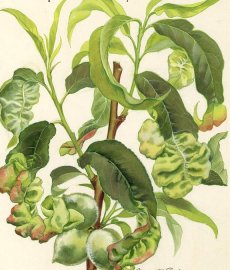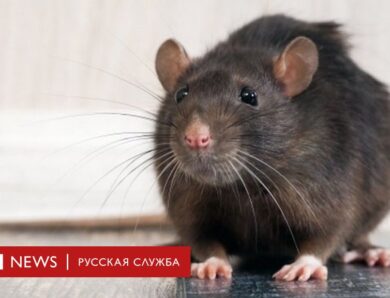
Diseases of peach, pests: turn yellow, blush, twisting leaves
Growing a peach tree in the garden is a time consuming process. But before you start buying fungicides (Delana or Strobi) from chlorosis, consider in more detail, which diseases and pests of peach and nectarine are the most dangerous and common, and read the instructions for use of drugs.
Typical tree diseases
Firstly, this plant is considered demanding in care, which will take a lot of effort. Secondly, not every region in terms of climatic conditions is suitable for planting this fruit specimen. And in addition to diseases and parasites clinging to the peach is also plentiful. You need to be able to deal with the latter factor.
Why the leaves curl, and then crack and crumble? There are other cases: convex red spots appear on the leaves of the tree or the tree suddenly starts to turn yellow and drop leaves. All that, including yellowing and shedding of leaves, happens by accident and, usually, is only the first sign of the presence of a disease. To know for sure, What shall I do, if the yellow leaves crack and curl, it is necessary to be clearly guided in all variety of diseases of a peach. So, when the threat manifests itself, you will already know in person.
Clusterosporiosis
How is peach cluster spores manifested? At first you may notice, as small brown spots with a crimson frame appear on the leaves of the tree. When the affected part of the plant turns red, bursts and dies, a hole is formed in its place. That is why peach disease, clusterosporiosis is often called perforated spot.
This disease can harm not only the leaf blade of peach, but also its shoots. Orange spots are formed on them, and as a result the whole branch perishes. This leaf disease occurs in wet weather or due to winds, which is carried by the causative agent of the disease - the fungus. To get rid of the disease will help you spray the tree during the swelling of the kidneys with copper chloride.
Curl of leaves
Peach treatment against diseases and pests (example, chlorosis) may be needed in the case of leaf curl. Initially, reddish swellings appear on the leaf blade, which are then covered with white plaque. The causative agent is a fungus, which spreads from tree to tree during the long rainy spring. Such an attack poses a serious threat to the garden peach: if not treated in time with a fungicide (example, "Delanoma"), affected leaves will fall, and the plant itself will initially lag behind in development, and then just die. The main control measures include pruning the affected parts of the tree. After removing them all must be burned.
Powdery mildew
The most dangerous diseases of peach garden include powdery mildew. This disease is dangerous not only for the leaves of the plant, but also for shoots and even fruits. They are all covered with light plaque, a bit like a cobweb. Colonies of these fungi are carried by the wind, especially during the hot summer, therefore, even after effective treatment with Delan, your plant may become re-infected.
It is recommended to fight powdery mildew by removing the affected shoots, branches, fallen leaves and fruits. So, you will not allow the disease to spread further. High efficiency is shown also by processing of a tree "Topsin" or "Topaz". For greater effect, you can spray the plant in June with insecticides.
Bone moniliosis
Peach moniliosis is also considered dangerous. This disease manifests itself during the growing season, but the infection occurs at the flowering stage of the tree. Twisted flowers of the plant turn brown and crumble. But this is just the beginning. Developing, the disease causes the trees to dry out, penetrates the ovary and fetus, because of which they die. The disease can be treated by timely pruning and burning of affected parts of the tree. Remove from under the plants and fallen fruit. Control measures include preventive spraying of wood with Bordeaux liquid.
Fruit rot
This peach disease primarily affects the fruit. They are gradually covered with gray spots, and as a result you get a completely rotten fruit. What's interesting, if the fruits are in contact with each other, you will definitely not avoid further infection. The disease can be prevented only if, if you carry out preventive treatment of the plant before, as it blooms.
Wood pests
Considering peach diseases and their treatment with Delan and other fungicides (read the instructions for use), do not relax. The invasion of parasites also poses a serious danger to the plant. Even if you see the first doubtful signs in advance, you need to know exactly, what are you dealing with. Therefore it is necessary to understand, what pests can damage a peach orchard.
Ashes
Due to the appearance of a frequent visitor called aphids suffer mainly not peach leaves, and shoots. The insect literally sucks vegetable juices from them, which leads to drying of whole parts of the tree. And over time, the leaves curl and crumble. It is best to fight aphid infestation at an early stage, because with the further development of the disease, your peach can be saved only by strong pesticides.

Dovgonosiki
This disease is especially dangerous for the buds of the plant, as well as flowers and buds. Nothing will be noticeable on the peach fruit, but inside the parasites can lay eggs, and this will start the development of various fungal diseases in your fruit specimen. How to deal with such pests? The best solution is to spray the wood beforehand, as the kidneys swell on it. Whitewashing of peach trunk with lime also shows good efficiency.
Pincers
These peach parasites look a bit like spiders. They can withstand even low temperatures in winter, finding shelter in the cracks of tree bark. In the spring, pests "come to life" and are taken for suction of plant juices. Because of this, peach leaves curl and crumble, shoots stop growing, and the tree itself stops developing. If your garden peach has already been attacked by a whole colony of ticks, a full harvest is hardly to be expected. This attack can be prevented by regular preventive pruning. If the parasites have already settled on the plant, use organophosphorus compounds, as well as pyrethroids.
Fruit mile
It is recommended to spray the tree from fruit moths. It is a gray narrow-winged butterfly, which winters under the bark as well, as well as ticks. In the spring, this pest becomes active and begins to eat peach shoots along with its core. Due to this, the development of the fruit tree is slowed down, as the shoots begin to wither and die, and the reason for that is a fruit moth.
Fruit eater
Such a pest will easily survive the winter under the bark of a tree, under fallen leaves or on damaged parts of shoots. It is dangerous not only because, that actively eats shoots, peach ovaries and even young pits, but also because it is a carrier of various fungal diseases. Buy a quality fungicide to control fruit fly.
Effective prevention
In order not to learn measures to combat certain diseases of your garden peach (example, chlorosis), you need to know, what preventive procedures will prevent the emergence of diseases and pests. Chlorosis and other diseases can be prevented, following the following recommendations:
- before flowering, prune dried branches;
- after pruning the shoots are burned;
- with the advent of spring should take care of spraying the tree with chemicals;
- when the fruits are formed and ripen in July, it is very important to apply complex fertilizers and water the tree well.
In order not to handle the escape from chlorosis or powdery mildew on the garden peach, necessary preventive measures.
Video "Proper care of a peach"
In this video you will learn about it, how to care for a peach in the garden, to get a rich harvest.


